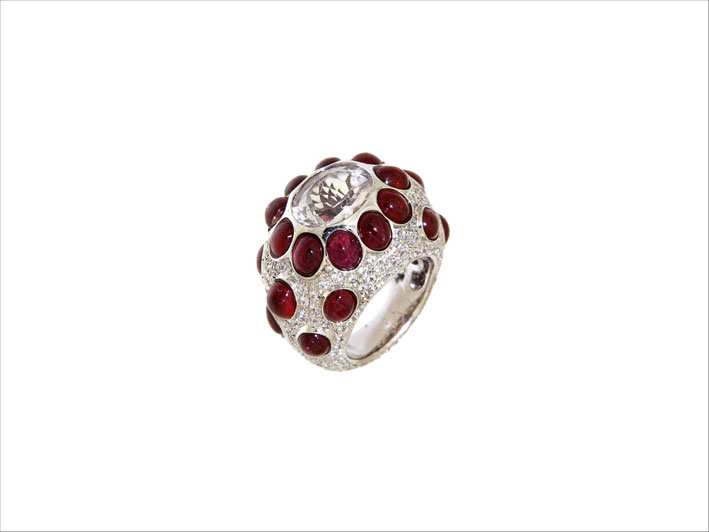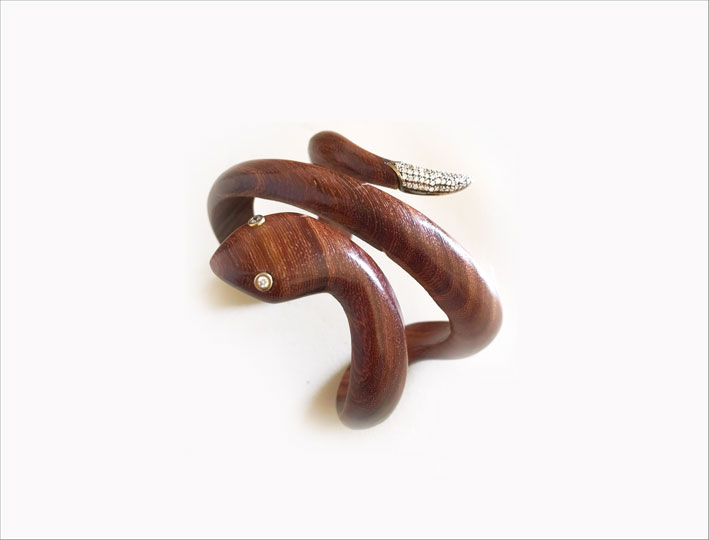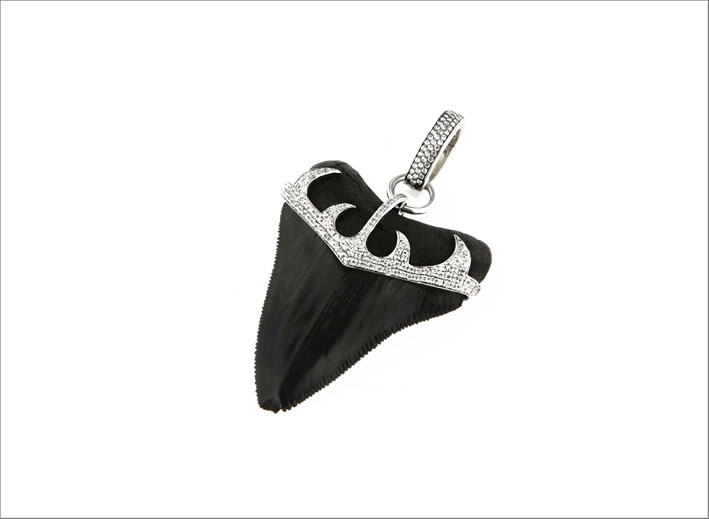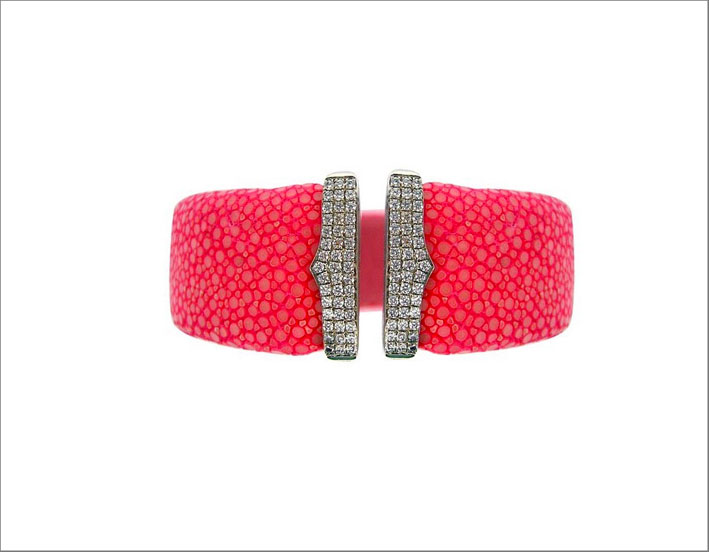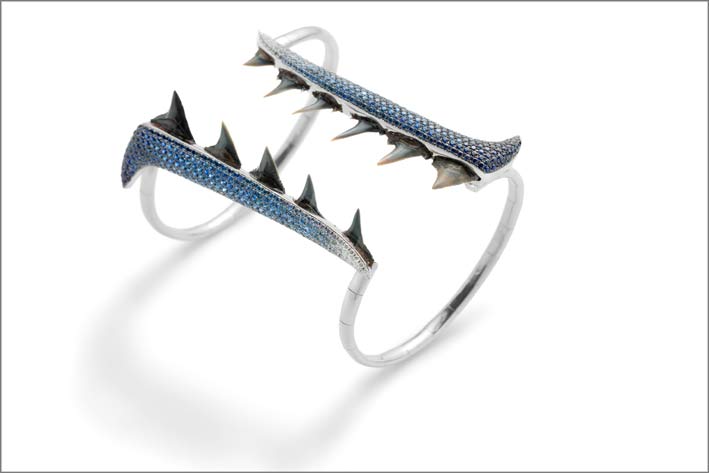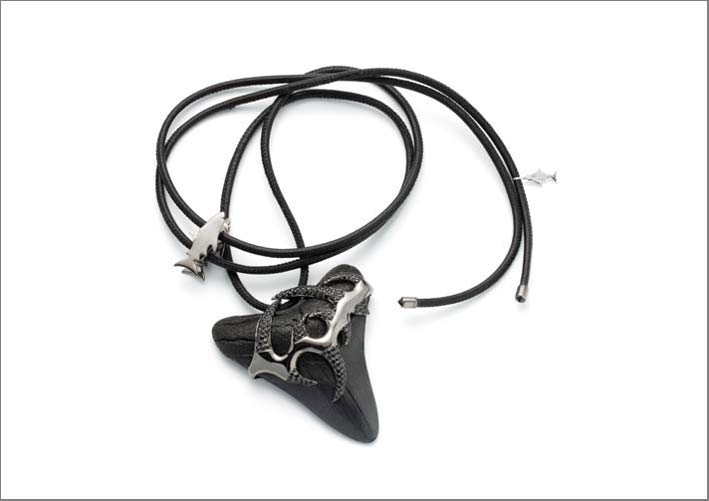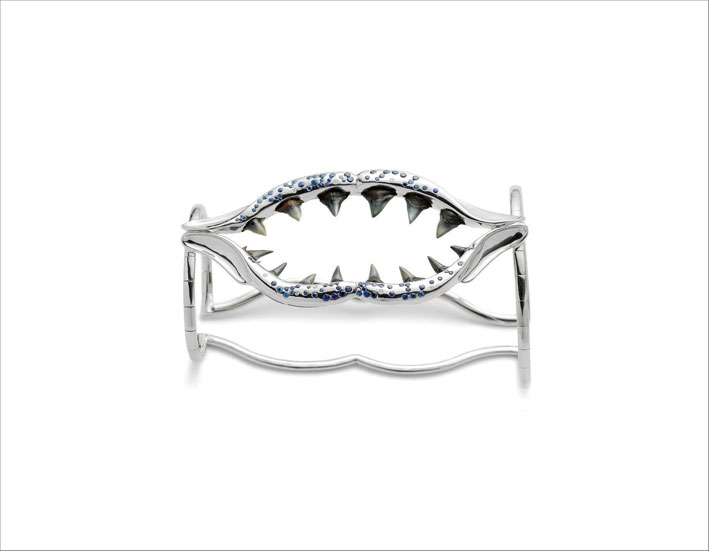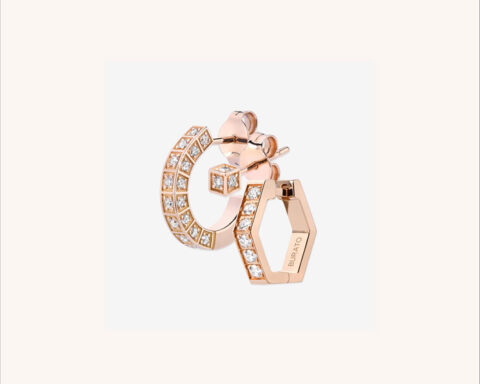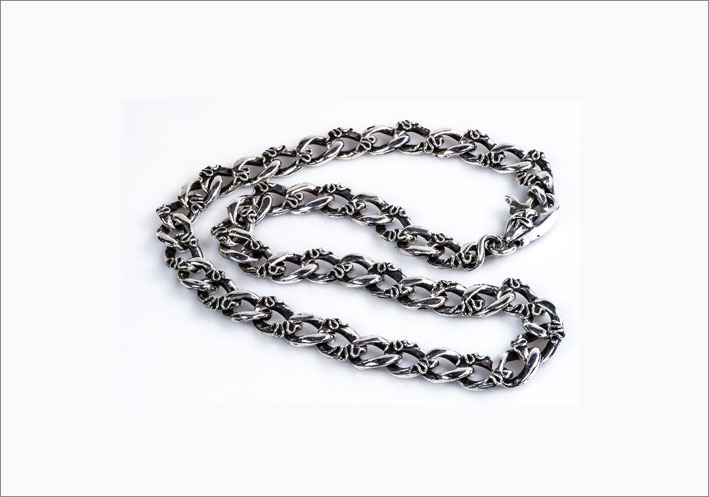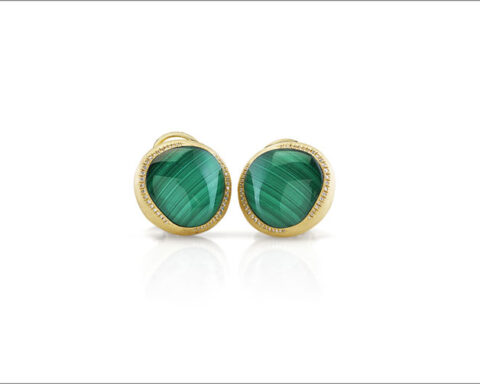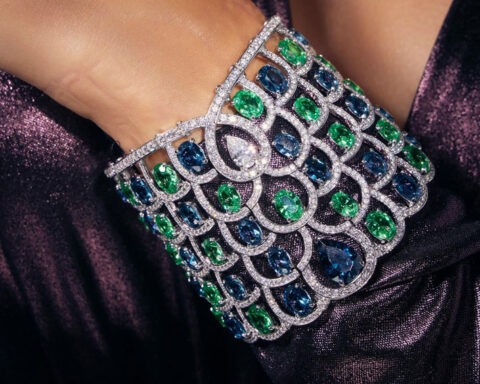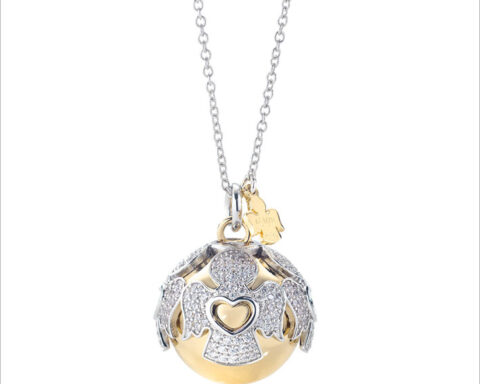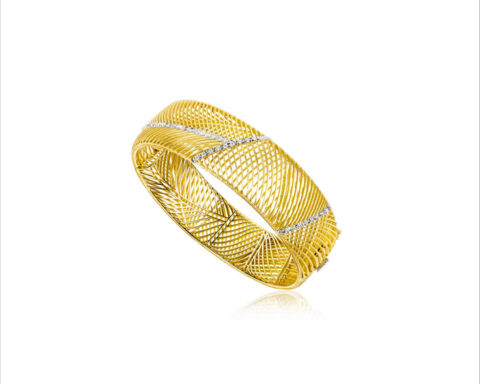The jewels of Chiara Passoni, precious stones and ancient teeth of the prehistoric shark ♦ ︎
Now the jewels of the sea have more jewels. But they are not colored anemones, dolphins that jump on the waves or corals that empurple exotic atolls. The new jewels of the sea or, better, dedicated to the oceans, are those of Chiara Passoni. They are not, however, simple jewels inspired by the kingdom of Neptune. Because Chiara Passoni has a symbiotic relationship with the sea: probably, if she could, she would live in a shell like the Botticelli’s Venus. For years the Milanese designer has sailed the seas all over the world. Over and under. On large and small boats and as divers, deep in the seas. And in her network has collected an absolute passion for the marine world as well as, more generally, for the natural balance. This harmony has been translated into his jewels.
Her Jurassic capsule collection goes even further: it embraces nature in an ultramillenary time frame, indeed, prehistoric.
La sua Jurassic capsule collection va anche oltre: abbraccia la natura in un arco temporale ultramillenario, anzi, preistorico.
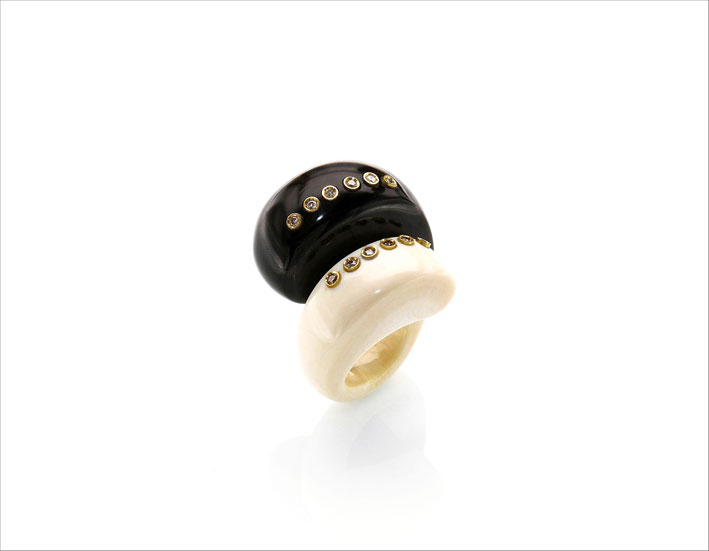
The jewels, in fact, are made using fossil teeth of megalodon, the great ancestor of the shark. Fossil teeth that are unique pieces, combined with sapphires and diamonds, gold and silver. The designer also emphasizes that the words “Respect Your Nature” are engraved on every jewel. In all there are 12 pieces, from the necklace to the bracelet, with diamonds and shades of sapphires. The jewels are declined in different shades: from blue to pink to black. Each piece has a (very long) history and is different from the others: from the abyss to the jewelry of today, it is a journey lasting millions of years.
